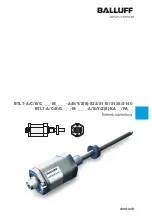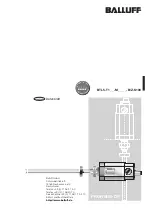
TTH200
HEAD-MOUNT TEMPERATURE TRANSMITTER | OI/TTH200-EN REV. B
19
Output – HART®
Note
The HART® protocol is an unsecured protocol, as such the
intended application should be assessed to ensure that these
protocols are suitable before implementation.
Transmission characteristics
• Temperature
linear
• Resistance
linear
• Voltage
linear
Output signal
• Configurable 4 to 20 mA (standard)
• Configurable 20 to 4 mA
(Dynamic range: 3.8 to 20.5 mA in accordance with NE 43)
Simulation mode
3.5 to 23.6 mA
Induced current consumption
< 3.5 mA
Maximum output current
23.6 mA
Configurable error current signal
• Overrange 22 mA (20.0 to 23.6 mA)
• Underrange 3.6 mA (3.5 to 4.0 mA)
Power supply
Two-wire technology, polarity safe; power supply lines = signal
lines
Note
Following calculations apply for standard applications. This
should be taken into consideration when working with a higher
maximum current.
Input terminal voltage
Non-Ex application:
U
S
= 11 to 42 V DC
Ex applications:
U
S
= 11 to 30 V DC
Maximum permissible residual ripple for input terminal
voltage
During communication, this is in accordance with the HART® FSK
‘Physical Layer’ specification.
Undervoltage detection on the transmitter
If the terminal voltage on the transmitter down-scales a value of
10 V, this may lead to an output current of I
a
≤
3.6 mA.
Maximum load
R
B
= (U
S
−
11 V) / 0.022 A
A
TTH200
B
TTH200
in Ex-applications
C
HART® communication resistance (R
B
)
Figure 14: Maximum load depending on input terminal voltage
Maximum power
• P = U
s
× 0.022 A
• Example:
U
s
= 24 V
P
max
= 0.528 W














































